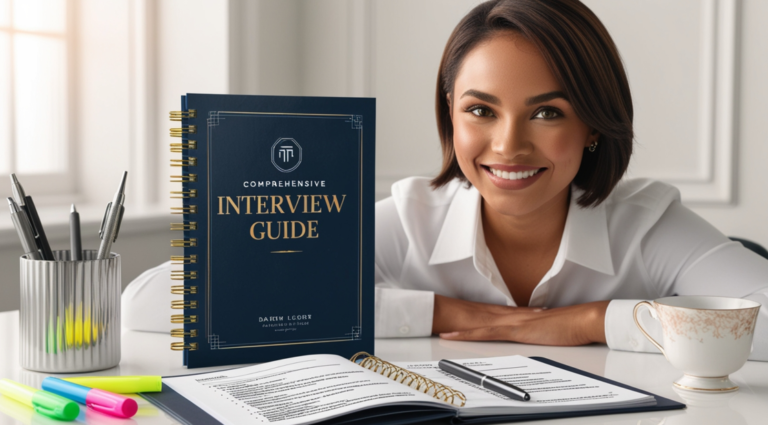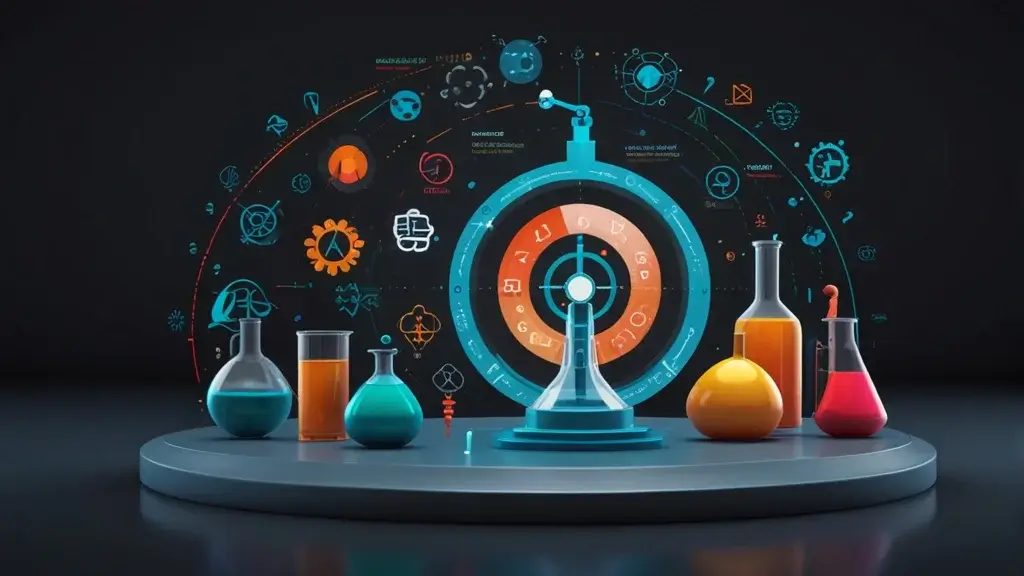Interview Guide
An interview guide is a comprehensive list of questions or topics that the interviewer aims to address throughout the interview process. It is called a guide because it is simply used to guide the interviewer and interviewee, because it is not set in stone. An interview guide is a data collection process in qualitative research that allows interviewers to collect high-quality, detailed information from interviewees by using open-ended questions or a list of points. Researchers often engage directly with respondents face-to-face, over the phone, or on the internet.
Respondents may perceive qualitative interviews as more conversational in nature, as the researcher aims to guide the discussion in order to gather valuable information from the respondent. Qualitative interviews involve asking open-ended questions, allowing respondents to freely express their thoughts and opinions without being limited to a set of predetermined options. Open-ended questions place a higher demand on participants compared to closed-ended questions. They require participants to generate their own responses using their own words, phrases, or sentences.
Purpose of Interview Guide
By conducting interview guide, researchers interact more closely with respondents, enabling them to collect a large amount of high-quality data. As most of these interviews happen face-to-face, interviewers can make their interviewees comfortable, relaxing them and encouraging them to answer questions truthfully.
Interviews involve interactions between the interviewer(s) and the respondent(s) based on interview questions. The interview questions are written down in an interview guide for individual interviews, with questions focusing on the phenomenon under study. The sequence of the questions is pre-determined. In individual interviews, the sequence depends on the respondents and how the interviews unfold.
During the interview, as the conversation evolves, you go back and forth through the sequence of questions. It should be a dialogue, not a strict question-answer interview. It is important to remain open-minded and acknowledge that there may be important topics that were not included in your interview guide or questioning route, which should be included. During the data collection process, you develop the interview guide or questioning route further and revise it based on the analysis.
The interview guide and questioning route may consist of a variety of questions, including open-ended and general questions, as well as more specific and detailed ones. Additionally, there may be probes and prompts to further explore the topic.
- Probes are exploratory questions that encourage the interviewee to explain more and provide additional details, such as can you tell me more about it or what happened next?
- Prompts serve as cues to encourage participants to share more information. Prompts emphasize on creating a stimulating environment that include maintaining eye contact, leaning forward, and using open body language. Prompts are used to guide the interviewee back on track or provide cues when they are struggling to explain or answer the question. Examples include, earlier you mentioned that…, do you want to say that…., etc.

Most qualitative studies start with open interviews to get a broad ‘picture’ of what is going on. You should not provide a great deal of guidance and avoid influencing the answers to fit ‘your’ point of view, as you want to obtain the participant’s own experiences, perceptions, thoughts, and feelings. You should encourage the participants to speak freely. As the interview evolves, your subsequent major and subordinate questions become more focused. A face-to-face or individual interview might last between 30 and 90 min.
In order to ensure that all participants cover a comprehensive set of topics during an interview, it can be helpful to utilize a framework or set of principles for constructing an interview guide.
Principles for Constructing an Interview Guide
(1) Identify the basics to use an interview as the interview is the appropriate data collection method.
(2) Acquire and adopt prior knowledge to develop a thorough and sufficient understanding of the subject being studied.
(3) Formulate a preliminary interview guide by operationalizing the previous knowledge.
(4) Pilot-test the preliminary interview guide to confirm the coverage and relevance of the content and to identify the need for reformulation of questions.
(5) Complete the interview guide to collect rich data with a clear and logical guide.
Process of Conducting Interview Guide
Here are some steps you could follow when planning and conducting an interview guide:
Identify the Sample
The first step is to identify your ideal sample. Identify the people you want to interview by examining your target population and identifying the most relevant sample. When you have a list, you could gather their contact details, including phone numbers or emails, so you can contact them to schedule the interviews. You could also sequence the interviews by allocating a time slot to each respondent, which can help maintain an orderly structure, leading to a smooth interview process.
Write an Interview Guide
Next, creating an interview guide containing all the questions you want to ask is important. Creating this guide helps you achieve the interview’s purpose, and you can refer to the guide if you deviate from the main subject. Interview guides can also help you structure the interview and conduct it smoothly, as you can follow pre-determined questions. When preparing this guide, remember that the interview’s objective determines the questions you ask.
Schedule the Interviews
You can start scheduling the interviews when you have a list of contacts and know which questions you want to ask. Discuss and set a time that is convenient for you and the interviewees. To avoid confusion, it is important to send a message confirming the time after the discussion. For this purpose, informed consent is essential.
Informed consent involves informing potential research participants about the essential aspects of a research study and explaining what their involvement will require. The informed consent process is a crucial aspect of conducting research with human subjects, ensuring ethical standards are upheld. It is also important to discuss where the interviews could take place so that the respondents can make the necessary arrangements.

Set a Time Limit
Due to their elaborate nature, interview guide often last longer than other interview styles. This can lead to interviewees becoming restless or exhausted, affecting the quality of their answers. To avoid this, you could set a timer for the interview to remind you how much time is remaining and tell you when to stop. In long interviews, you could schedule a short break and supply refreshments. Taking these steps relaxes interviewees and could lead to them giving more accurate answers.
Create a Comfortable Atmosphere
It is important that the interviewer ensures that the respondents feel comfortable during an interview guide, as they may be hesitant to answer questions if they are tense. You could engage in casual conversation before the interview begins. It is also important to explain to the respondent how you are going to process their responses and inform them that they can choose to anonymize their answers, which reassures them that their data is safe.
Take Notes
Take notes of any relevant information you receive from the beginning of the interview to the end. Maintain eye contact with the interviewee and make gentle nodding gestures occasionally so that they know you are listening to them. For the best results, turn off your mobile phone during the interview to avoid distractions and summarize the main points towards the end.
Analyze the Data
After the interviews are over, collect and analyze the data. If you recorded the interviews, you can transcribe and document them for future reference. You can then identify the important information from each interview and collate all the results.
Difference between Interview Schedule and Interview Guide
| Interview Schedule | Interview Guide |
| Inflexible | Flexible |
| Follows a pattern | It does not follows a pattern |
| Questions cannot be skipped or molded | Questions can be skipped or molded |
| Does not care about the situation | Changes according to the situations |
| Rigid in nature | Alterable in nature |






